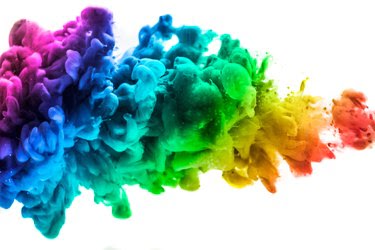Quck answer
Setting dye is a process used to make the color of fabric or other materials more permanent. There are several methods to set dye, including using heat, chemicals, or natural substances. Heat setting involves applying heat to the dyed material to help the dye molecules bond with the fibers. Chemical setting involves using substances like vinegar or salt to help the dye molecules adhere to the fabric. Natural substances like tannin or alum can also be used to set dye. It is important to follow the instructions specific to the dye and material being used to ensure the best results.
Adding vibrant and colorful dyed fabrics to your clothing and home goods can enhance their appearance. However, it is important to maintain the freshness and vibrancy of these items even after washing. To preserve the colors and prevent dye bleed, you can use household items as mordants or fixatives to set the dyes in your clothing, towels, and linens.

How to Fix Dye Colors
Image Credit:
StMax89/iStock/GettyImages
Why Do Dyes Bleed?
Dyes can bleed and fade due to various reasons, including poor dye quality and user error. Bleeding can occur when improper dyeing practices or the wrong type of dye for the fabric are used.
One common cause of dye bleed is the presence of excess dye in the fabric. This often happens when the item is not rinsed thoroughly after the dyeing process.
Fixing Dye Colors in DIY Projects
If you are working on craft or sewing projects that involve commercial or natural plant-based dyes, it is important to know how to fix the dye colors. You have two main options for fixing dyes in fabrics.
Firstly, you can use a mordant or fixative. A mordant is a substance that is added to a solution to help the cloth’s fibers absorb the dye more effectively. Common mordants include salt and vinegar.
Alternatively, dyes can be set using heat. This can be achieved by using a hot dryer or iron to create damp heat that fixes the dye onto the fabric.
Before starting a dye project, it is crucial to carefully follow the dye manufacturer’s recommendations, as they may vary depending on the type of fiber. For example, cotton fabrics may require salt for the best dye setting, while silk or wool fabrics may need vinegar.
It is always a good idea to perform a test dye on a small piece of fabric before dyeing the entire item.
Testing Color-Fastness in New Clothing and Items
To test the color-fastness of new clothing items, such as dark denim or brightly colored clothes, rub a piece of plain white paper against the fabric. If there is no discoloration on the paper, it is likely safe to wash the item as usual using cold water and a detergent suitable for cold-water cycles.
If the paper shows some color transfer, it is advisable to pretreat the item before washing to help fix the dye. Additionally, extra care should be taken with the item in future washes to protect both the item itself and other items that may come into contact with it.
Fixing Dye Colors in Purchased Fabrics
The challenge with purchased fabrics is that you may not know the type of dye used to color them. Different dyes can have varying effects on different fabrics. Without this information, it is important to take certain steps to help fix the dye in colorful clothing items, such as dark denim jeans, brightly colored towels, or colorful shirts.
Firstly, try using a pretreat solution. Fill a household bucket with enough water to submerge the item and add 1 cup of white vinegar. Turn the item inside out and soak it for at least an hour.
After prepping the item, wash it in your washing machine. Avoid adding any other items to prevent dye contamination. Use half the recommended amount of detergent and add half a cup of white vinegar, as well as a tablespoon of salt. The salt helps seal in the color and prevent fading.
Wash the item in cold water, both during the initial vinegar wash and in future washes. Cold water helps preserve vibrant colors and reduces energy consumption.
To prevent bleeding dyes, consider using a color-catcher sheet in the washing machine. These sheets trap the dyes in the water but don’t prevent fading.
Some experts recommend adding half a cup of baking soda to each wash cycle when laundering colorful clothing. Baking soda helps maintain the vibrancy of dyed clothing and also keeps whites bright.
If you’re dealing with dye bleeding onto another garment, there are a few solutions. For white cotton or cotton blend items without elastic, soak them in a diluted bleach solution. Rinse thoroughly and air dry. If dye remains, repeat the process. Alternatively, you can use a commercial dye remover, following the instructions carefully. Another option is to over-dye the piece with a slightly darker shade to cover up the bleed. Follow the manufacturer’s directions when using home dye kits.


